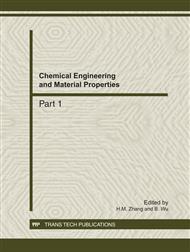p.778
p.783
p.789
p.793
p.798
p.803
p.807
p.812
p.817
A Thermo-Sensitive Laser Imaging Composition Derived from a Modified Phenolic Resin
Abstract:
The performances of CTP plate depend heavily on polymer binder and those capable of producing large image contrast by exposure are keys to quality plate. This research proposed a polymer resin containing hydrophilic spices in the side chain which could be sheltered by the thermal induced crosslinking reaction during plate manufacturing process and released upon imaging exposure. The resin was prepared through esterification reaction of maleic anhydride with phenolic resin, and its chemical structure was characterized by IR spectrum. Plate coatings were formulated with the modified polymer as binder resin, 2,2-bis(4- (2-(vinyloxy)ethoxy)phenyl)propane as the crosslinking agent, a near infrared absorbing dye and crystal violet as the tracing agent. Solubility of the exposed and unexposed coatings in diluted aqueous alkaline was investigated in situ using a home-made dissolving rate tester. It was found that polymer containing 4-6% mole carboxyl groups led to high image contrast and this contribution came directly from the cross-linking and decrosslinking reactions. Preliminary test indicated that this polymer coating generated positive image of high contrast after exposure and could be used as CTP plate coating for thermal laser imaging.
Info:
Periodical:
Pages:
798-802
Citation:
Online since:
December 2011
Authors:
Keywords:
Price:
Сopyright:
© 2012 Trans Tech Publications Ltd. All Rights Reserved
Share:
Citation:


